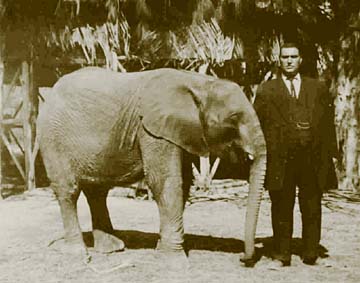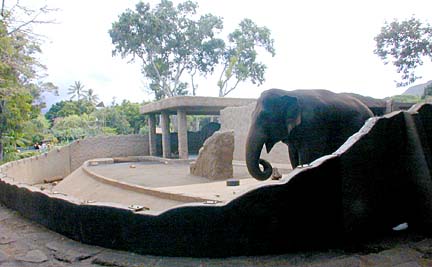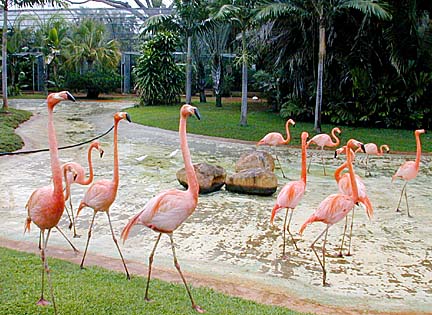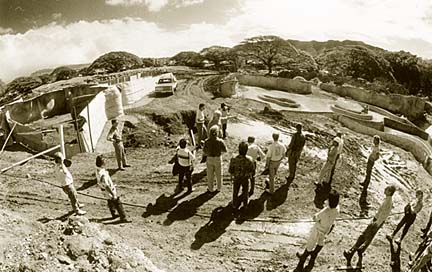
Advertisement - Click to support our sponsors.

Monday, March 5, 2001

Photographs often are the best way to show dramatic changes in Hawaii, providing an easy update on landmarks, persons and events. At other times, however, photos showing minimal changes during the years remind us that the more things change, the more they remain the same. Look for examples of big and little changes every Monday in "It's about time," which will inform, update and prod a few memories.

Honolulu Zoo
Honolulu got its first pachyderm, Daisy, in 1916, shown
here with city parks administrator Ben Hollinger. (Tragically,
Daisy ended up attacking and trampling her keeper to death in
1933.) Eighty-five years later, the Honolulu Zoo plans to
build a $5.8 million, 51,000-square-foot compound
befitting Mari and Vaigai, the current resident elephants.

By Craig T. Kojima, Star-Bulletin
Mari and Vaigai are living in a 6,000-square-foot enclosure
deemed too small by the U.S. Department of Interior. Although
there has been talk of relocating the zoo miles away from the
prime Waikiki area, it has been a part of Kapiolani Park almost
from the park's beginnings in 1876. That year, King David
Kalakaua made available to the people of Hawaii 300 acres
of marshy land, where he kept his collection of exotic birds.
In 1877, Queen Kapiolani Park was named after his wife,
and it eventually came under the city's jurisdiction. From
1914 to 1916, parks administrator Hollinger began collecting
animals, including Daisy, to exhibit. In 1947 the collection
officially became the Honolulu Zoo, with Paul Breese
its first director.

By Craig T. Kojima, Star-Bulletin
The zoo has undergone many renovations and transformations:
In 1967, workers put finishing touches on one of two ponds
built just inside the entrance; the ponds are now enjoyed by
flamingoes and other avian life.

By Mike Tsukamoto, Star-Bulletin
Work on the African Savannah began in 1991.

By John Titchen, Star-Bulletin
One thing has not changed: Despite a move in 1970 to
allow a snake exhibit, it remains illegal to import snakes
to Hawaii -- whether they live at the zoo or not.

By Bob Young, Star-Bulletin
Just outside the zoo, here is what the corner of Kapahulu
and Kalakaua avenues looked like in 1970, seven months
after the Jaycees planted a circle of shrubs.
E-mail to City Desk
© 2001 Honolulu Star-Bulletin
https://archives.starbulletin.com






